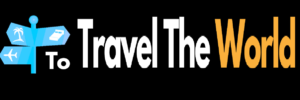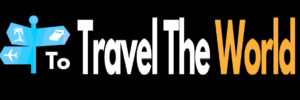This time last year I boarded my first flight since the start of the pandemic. Since then, I’ve flown on a dozen flights within the U.S. Each trip varied slightly from the one prior, as new policies and procedures were continually introduced.
Since the start of the pandemic, I’ve seen the closure and now partial reopening of airport amenities (e.g., lounges, restaurants, shops, and bars), variations in mask-wearing compliance (both before and after the federal mask mandate), changes in boarding procedures, and, having flown on Delta Air Lines throughout the pandemic, the evolution from reduced capacity to the (recent) return to fully booked flights.
Recent survey data from TripIt showed that airlines and airports having these procedures in place to reduce infection spread has helped travelers feel comfortable returning to flying. (51 percent and 46 percent of travelers said this, respectively.) But those procedures continue to evolve—and while the overall experience hasn’t changed that much, traveling during the pandemic can still feel hard to predict.
If you’re planning to fly again soon, here are the tools I’ve used to navigate the airport—plus some tips for navigating the ever-evolving world of travel.
How can I prepare for navigating lines and crowds at the airport?
While traveler confidence continues to trend up (and COVID-related travel concerns trend down), evergreen concerns—like avoiding long check-in and security lines—persist.
If you’re hoping to avoid these common airport wait times, here are a few tips:
1. Sign up for TSA PreCheck.
If you have fifteen minutes and $85, you can save yourself hours of wait time in airport security lines. Applying for TSA PreCheck involves a five minute online application followed by a 10 minute in-person interview at an enrollment center (such as your local airport), which includes a background check and fingerprinting. A five-year membership costs $85, and (typically) grants you access to an expedited security line where you don’t have to remove or separately scan your laptop, liquids, shoes, or jackets. More than 200 airports participate in the program—check to see if your home airport does here—as well as 80 airlines.
Read more: Skipping Airport Security Lines Is a Matter of Biometrics
2. Sign up for CLEAR
If you’re wary of the ever-growing number of TSA Pre members, there’s an alternative way to skip security lines: CLEAR. Instead of using traditional documents, CLEAR uses biometrics— specifically, the program scans your fingerprints and the irises of your eyes—to verify your identity, thus expediting travelers through the ID verification step of security.
CLEAR membership runs $179 per year. You can sign up online and then complete your application at an airport kiosk in just a matter of minutes. If you’re flying out of one of CLEAR’s airport locations, you can also sign up for the service on site.
Ready for even more good news? With a TripIt Pro membership, you can try CLEAR on a four-month trial for free. After your trial period is up, you can sign up for a discounted rate of $149/year.
3. Sign up for frequent flyer programs to earn elite status
Depending on the airline, elite status members can use dedicated lines for checking in and dropping their bags—helping to save time and avoid crowds in this area of the airport.
As an elite status member, you may also have access to airport lounges that can help you find a little more personal space while you wait for your flight.
4. Check the Airport Security Wait Time feature in TripIt Pro
With TripIt Pro, you can find out security wait times—including those for TSA Pre lanes—before you even arrive at the airport. Armed with this intel, you can compare which lane is shortest and head straight there as soon as you arrive curbside.
Where can I find information about what’s open in the airport?
One of the more (recently) unpredictable elements of air travel is knowing what’s open—and what’s not—at the airport. Availability of amenities varies widely from airport to airport—and, in my experience, from trip to trip.
To take the guesswork out of whether you can get a meal (or a book, or a beverage) before your flight or during your layover, use interactive airport maps to search for restaurants, shops, and more and find out ahead of time if they’ll be open.
You can also search interactive airport maps to find information about on-site amenities related to health and safety, as well. For available airports, TripIt Pro users can search interactive maps for the locations of COVID-19 testing sites, stores that sell face coverings, hand sanitizer stations, and personal protective equipment (PPE) vending machines—all right in the app.
Read more: 2 New Enhancements for Air Travel in TripIt
Interactive airport maps are available to TripIt Pro users for more than 105 global airports.
Am I still required to wear a mask at the airport?
While many U.S. states are beginning to relax their mask-wearing policies for vaccinated residents, all travelers are still required to wear a mask at the airport and on flights. As of publication, the Biden administration’s current mask mandate is in effect through September 2021.
Flying outside the U.S.? Check the COVID-19 travel guidance feature in the TripIt app for your airline’s specified policies on mask wearing, as well as other procedures they have in place to reduce infection spread. This includes information on your flight’s enhanced cleaning procedures, middle seat policy, health documentation requirements, food and beverage service, and more. (Hint: You can also consult this feature for your destination’s mask-wearing requirements as well as other destination-specific guidelines. More on that, below.)
Will I need to show a negative COVID-19 test result or proof of vaccination?
The answer is: It depends. It depends on your destination, your vaccination status, and when you’re planning to travel—as travel requirements are constantly changing.
According to updated guidelines issued by the Centers for Disease Control and Prevention (CDC), vaccinated passengers traveling within the U.S. do not need to get tested before or after travel or self-quarantine after travel.
When I was checking into a domestic flight last month, I was required to answer a series of questions regarding my personal health—e.g., that I had not been exposed to COVID-19 and/or had been fully vaccinated—and confirm that I would comply with wearing a mask. I was also made aware that some destinations have COVID-19 travel requirements (such as showing proof of a negative COVID test result) that I might be subject to comply with.
That said, I was not asked to present my vaccination card as proof of my current health status.
Meanwhile, if you’re vaccinated and planning to travel outside of the U.S., requirements and restrictions vary greatly. Some European countries are reopening to vaccinated tourists, including Americans. There still isn’t a definitive answer as to if or how American tourists will present proof of vaccination, though a number of EU-member nations are now issuing digital COVID travel passes to enable residents to once again travel freely across the 27-nation bloc.
And while current CDC guidelines say that citizens do not need to get tested before leaving the U.S. (unless your destination requires it), all travelers—regardless of vaccination status—must show a negative test result or documentation of recovery from COVID-19 before boarding an international flight to the U.S.
Tip: Consult the COVID-19 travel guidance feature for the latest guidelines, restrictions, and requirements for the places you’re planning to visit. This includes current infection rates, quarantine rules upon arrival, testing requirements, and other information travelers need to know before visiting an area.
If I’ve learned anything about navigating the world of travel during a pandemic, it’s to expect change. Using these tools and tips can help us all keep up.













